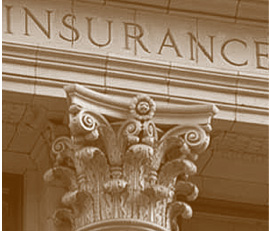“With record earnings for insurers coming in, is the hard market over?” That was the question of the day for the annual “View from the Top” panel at the April 6 event, posed by moderator Tony DeFelice, chairman, national casualty and CEO of Aon Construction and Infrastructure.
“No,” came the firm answer from the expert group. The need to keep pace with emerging exposures and a backlog of claims yet to be adjudicated post-pandemic will keep the soft market at bay, they said.
“We still haven’t experienced what those verdicts are going to look like,” said Alexandra Littlejohn, managing director, specialty broking leader at Alliant Insurance Services. “I think that now unfortunately to our clients and our other broker partners, we’re going to suffer through this a little bit this year and probably into some of next year.”
Insurers are in a much better position than two years ago, earning a risk-adjusted return after significant rate increases, according to Lyndsey Christofer, executive vice president, construction major accounts with Chubb. The wide range of known and unknown risks, along with large losses that are already occurring, suggest a loss trend around 8% to 9% for the next five years, she said. The hard market isn’t over, but it’s “certainly slowing.”
“I think if you are a clean risk that has been somewhat loss-free, then your days of 30% rate increases might be over. But do I think you should still be expecting a double-digit rate increase? Yes, you probably should, hopefully for the next two years,” Christofer said. Asked by DeFelice about the 9% figure, she added, “If you are completely loss-free, you should be demanding an 8%. But most accounts aren’t.”
Anthony Lombardo, chief underwriting officer of North America for Allied World, suggested the market hasn’t been as hard as in the past.
“A hard market was back in ‘86 when you couldn’t put together $50 million in capacity,” he said. Homebuilders, municipalities – those are experiencing a true hard market, Lombardo added, but capacity for most other risks is available at a price.
For buyers, however, paying 200% or 300% on renewal definitely constitutes a hard market, DeFelice noted.
Rates should be adequate now, but casualty pricing is still “a very reactive science” and heavily impacted by outside factors, according to David Perez, chief underwriting officer of Liberty Mutual’s Global Risk Solutions.
“Our price overall isn’t really set by us,” he said. “It’s set by the collective output of the U.S. tort system that puts out verdicts that set the bar for other verdicts … and the biggest influencer on these numbers is really John and Jane Doe Public.”
Competition may drive pricing down, but, “it’s not going to take another 17 years to get to the next hard market,” Perez added.
The industry – carriers, brokers, and buyers collectively – should avoid going too far in the other direction, noted Chubb’s Christofer.
“I think that we are gluttons for punishment,” she said. “We fought so hard to reach this more adequate – and I won’t say adequate, I’ll say more adequate – pricing level, and we won’t know for years if it was enough.”
“There is really no book out there as far as insurance foibles or mistakes that we made in the past, and I wish there was because we are destined to repeat them again and again,” said Allied World’s Lombardo.
Lombardo suggested new capacity in the market could pressure prices, but not enough for a “major impact.”
“I don’t think we’re going backward, I don’t think we’re going to repeat how things were pre-COVID, pre-soft market,” said Littlejohn. Instead, buyers that shifted risk into their captives or dropped limits would buy back limits as rates stabilize, she predicted.
In two years’ time, insurers will be able to see how losses develop from 2018 and 2019 and see whether rates were adequate, Perez commented. He agreed the industry isn’t returning to soft market tendencies.
“There’s just too many lessons learned,” he said.













